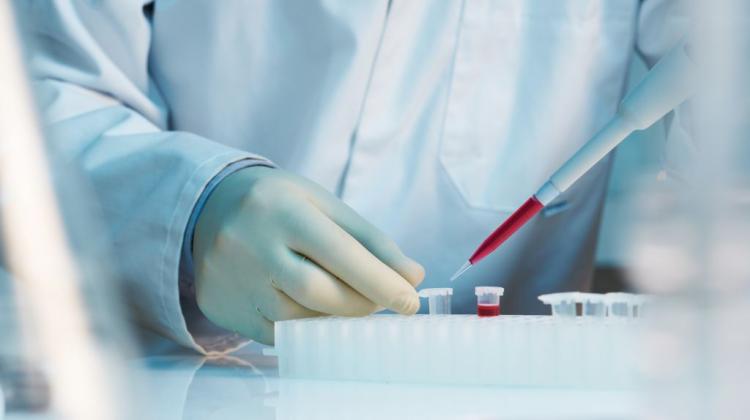Researchers from the University of Silesia have a way to improve the action of a drug for men
 Photo: Fotolia
Photo: Fotolia
Researchers from the University of Silesia have developed a method to improve the action of tadalafil - a drug used in men with erectile dysfunction. They have just patented the method of obtaining a highly stable, amorphous form of this substance - the university informs.
Amorphisation is a way to improve the action of drugs. According to the assumptions, amorphous pharmaceuticals will not only work faster and more effectively. They also be safer for the body than those currently available on the pharmaceutical market.
These new substances have been investigated by Prof. Marian Paluch from the Department of Biophysics and Molecular Physics, University of Silesia. The researcher - quoted in the press release - explained that over 90 percent active substances contained in solid-form medicinal products (tablets or capsules) are crystalline substances. Drugs in this form - because of their ordered internal structure - are very often characterized by poor water solubility, which in turn translates into their low bioavailability.
According to the researcher, an alternative to poorly soluble crystalline substances is their new form, obtained by the amorphisation process. Amorphous bodies combine properties of solids and liquids - the substance in the amorphous state is a solid, but the molecules that form it are arranged in a chaotic manner, more like a liquid.
"By transforming a crystalline active substance into an amorphous form, we obtain a product that is much better absorbed from the starting material" - explained Prof. Paluch.
He added that the higher bioavailability of a drug resulting only from a change in the form of the active substance may contribute to the reduction of the dose that should be administered to the patient to achieve the desired therapeutic effect. Therefore, we can expect, among other things, fewer side effects associated with unabsorbed portion of the active substance remaining in the gastrointestinal tract.
One of the limitations of amorphous pharmaceuticals is their thermodynamic instability. This means that over time they may recrystallise and lose their properties. Therefore, in order for the active substance in the amorphous form to be marketed, it must be physically stable for a minimum of three years.
Therefore, one of the main tasks of researchers from the University of Silesia working on tadalafil was to develop a method to obtain its amorphous form, which would exhibit high physicochemical stability.
"We knew that tadalafil was poorly soluble in water, so we subjected it to amorphisation. The key was the choice of method. Crystalline substances can be melted, spray dried, compressed or lyophilised. Our team has, however, decided to use the method of grinding this drug at room temperature and liquid nitrogen temperature (about minus 200 degrees Celsius)" - explained Prof. Paluch.
As he added, scientific literature is dominated by the belief that the least physicochemical stable amorphous substances are obtained with this method. "Meanwhile, it turned out that we had received a surprisingly stable medicinal substance, which allows to consider its introduction into the pharmaceutical market" - he noted.
In addition, in the scientist\'s opinion, the process of obtaining the amorphous form of tadalafil - according to a patented method - is also relatively inexpensive. "Grinding a compound is one of the least expensive methods of obtaining amorphous forms and does not require the use of other substances such as solvents" - he said.
"Thanks to the solutions we use, we get a clean, stable compound that can be easily processed to give it the final form, such as tablet form. The stability, excellent absorption and low cost of amorphous tadalafil indicate the high potential of the patented solution" - concluded Prof. Kamil Kamiński from the University of Silesia.
According to the press release, the authors of the invention are the employees of the Department of Biophysics and Molecular Physics of the University of Silesia: Prof. Marian Paluch (head of unit), Dr. Kamil Kamiński, Dr. Karolina Adrjanowicz, and Daniel Żakowiecki, representing Polpharma, Irena Gruszka from the Institute of Physics of the University of Silesia and Dr. Łukasz Hawełek from the Institute of Non-Ferrous Metals.
Agnieszka Kliks-Pudlik (PAP)
PAP - Science and Scholarship in Poland
akp/ zan/ kap/
tr. RL
Przed dodaniem komentarza prosimy o zapoznanie z Regulaminem forum serwisu Nauka w Polsce.















